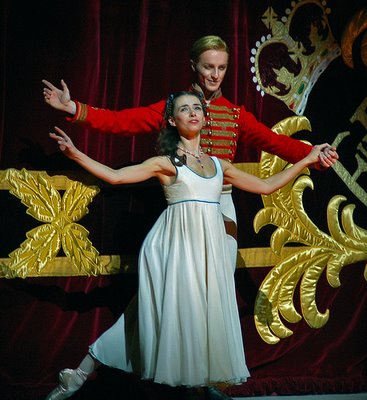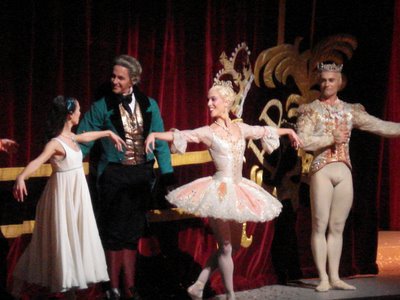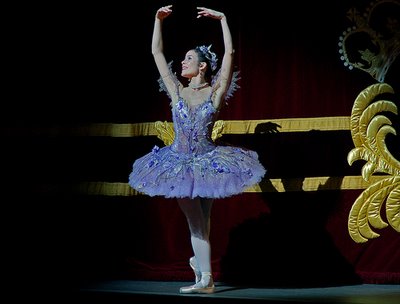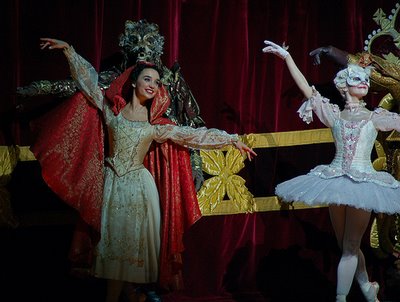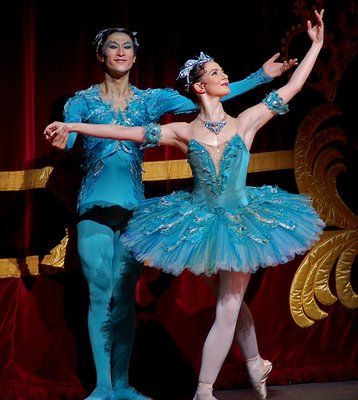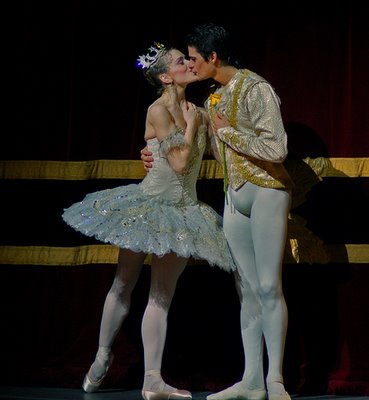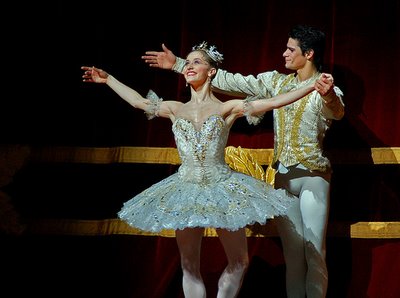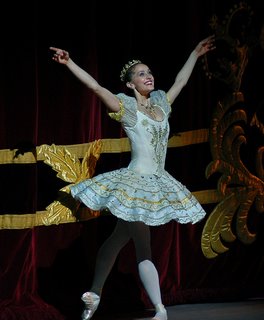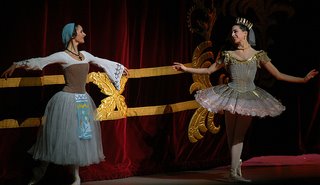A star-studded cast, a minimalistic set and an innovative orchestral version of White Stripes, composed this highly successful World Premiere of McGregor’s Chroma. Joby Talbot, genius-ly arranged White Stripes’ works on an orchestral scale. There are also moments where he had the majority of the orchestra putting down their instruments, to snap their fingers, to create a unique effect to the music. A mixture of top hits, such as ‘Blue Orchid’, ‘Button to Button’ to name a few. Hearing these hits on a different level, brings out a whole new feel to the White Stripes, and also to the classical auditorium in the House.
John Pawson’s first attempt at stage design, created an immaculate Zen effect to an overly ornamated choreography by McGregor. The wings left with a tall and vertical obolong shaped entrance/exit for dancers. A curved floorboard connects the ground to the ‘walls’, where dancers carefully descend on to the stage when they enter. The floor and walls are white, leaving a long black rectangular opening for dancers to enter and exit on stage. Lighting by Lucy Carter was interestingly done. She lit the side exit/entrance (obolong shaped opening), illuminating the stage creating a surreal effect to some of the slow numbers. Moritz Junge, costume designer, approached the work as what the title depicts. A hue purer than white… And since, the set is minimalistic, the costumes was no fuss skin coloured camisole and briefs, carefully coloured matched to the dancer’s skin colour. Just a special mention that, the female dancers had their fringes down, which was perhaps something new, as most classical works, dancers had their hair up and off their faces. McGregor’s electrifying choreography speaks for itself. The movement of each dancer are uniquely interpreted by each of them, and also showing off their hidden qualities. The company’s wide range of classical repertoire and some modern works do not fully exploit the dancer’s hidden qualities, such as distortion of movements, hyperextension of their limbs, and so forth.
Most of the sequences in the dance were fast paced and intense creating almost an almost increased heart rate. Halfway through the piece, Sarah Lamb and Federico lead a most lyrical and sensual duet.
The ballet begin with most of the dancers on stage, with centring main couple, Alina Cojocaru and Edward Watson. Both hyper-flexible dancers put up an incautious duet to kick off the show, and slowly the rest of the dancers joined in with them. Steven McRae partnered Tamara Rojo in a short duet soon after, which was dimly lit.
Then after, the stage/space was lit up once again to introduce another couple, Lauren Cuthbertson and Eric Underwood. Both dancers enter the stage, from the back (the Black opening), and Cuthbertson began, moving like an object that has limited control of her limbs, while Underwood enters to nsync with her movements and yet attempting to control her at some times.
The complete their duet almost at downstage right, when Cuthbertson broke off from Underwood and went into a short solo and walked over to the other side of the stage, looking back at him; whilst he began a lyrical solo, swaying his hips (quite Salsa-inspired) and lyrical use of arms.
Both dancers exited soon after when the next trio of Steven McRae, Jonathan Watkins and Ludovic Ondiviela enters. McRae, standing in the middle commenced the sequence first, followed by the other two. McRae confidently jutting out his hipbones, and flying into huge sissonnes. They used the space linearly, travelling diagonally up and down the stage. Halfway into their sequence, they broke off to lift and drag each other across the stage, finishing on downstage right, in a triangular shape with McRae in the middle and front. The repeated the movements in unison, finishing with legs in 2nd position in demi plie on demi pointe. At the very instant, the lights went off casting an intimidating darkness around the auditorium. At this point, as an audience, the heartbeat and attention which has been working so hard, went into a standstill, when the unexpected darkness shout out back into our faces. For a moment, the audiences reacted awkwardly, and was (I suppose) in awe, applauded and cheered.
The show continues… Just like turning over a new page in a sketch book, something different unfolds. The long, vertical entrance were lit from within, illuminating the stage with somewhat a mystical and sensual effect. Sarah Lamb and Federico Bonelli broke into a lyrical and arousing duet. Lamb moved around Bonelli like a slithering snake, lusciously unfolds her body into beautiful positions. Bonelli provided a sturdy support and also showed off his gorgeous extensions.
The following duet was performed once again by Watson and Cojocaru. This time round, they broke into a more adventurous attempt at creating some of the finest positions and movements. Watson’s movement seemed to depict an angst, raging personality, and Cojocaru’s a petit but tempestuous vixen.
Just as the duet was coming to an end, the rest of the cast come back onto stage (entering from the Black opening at the back of the stage). The cast scattered randomly on stage, whilst Watson and McRae did a short sequence in unison; however both dancers may have moved in the same steps, but no in the exact same way, or the exact same quality. One could see a much more confident performance from a principal, Watson, and a striving performance from young and talented, McRae. Another short sequence, from Rojo and Cojocaru, which was exceptionally rare to see two prima-ballerinas of today sharing the stage and dancing side by side. A lot of death-defying throws of the females from one partner to another.
Between the two partners, the females have to hover in the air for a few seconds spreading a distance of about 2 to 3 meters perhaps. The cast moved hectically, but it had an invisible harmony cloud encircling their chaotic movement. And as sudden as it began, the entire cast stood still in parallel with their back facing the audience as the lights shut down in an instant. It was indeed an extraordinary display of hidden talents and intensity.
 Curtain Call, From Left: Jonathan Watkins, Lauren Cuthbertson, Edward Watson, Ludovic Ondiviela, Sarah Lamb, Joby Talbot, Federico Bonelli, Lucy Carter, Alina Cojocaru, Steven McRae, John Pawson, Tamara Rojo, Wayne McGregor and Eric Underwood [Photos:DaveM]
Curtain Call, From Left: Jonathan Watkins, Lauren Cuthbertson, Edward Watson, Ludovic Ondiviela, Sarah Lamb, Joby Talbot, Federico Bonelli, Lucy Carter, Alina Cojocaru, Steven McRae, John Pawson, Tamara Rojo, Wayne McGregor and Eric Underwood [Photos:DaveM]To say it all, it left me breathless, and left the audience with sore hands from the clapping. It was ultimately a success, without a doubt, a piece that shouts out to not just ballet lovers, but to music lovers, the White Strips’ fans and anyone who dared for an unforgettable experience at the opera house.
